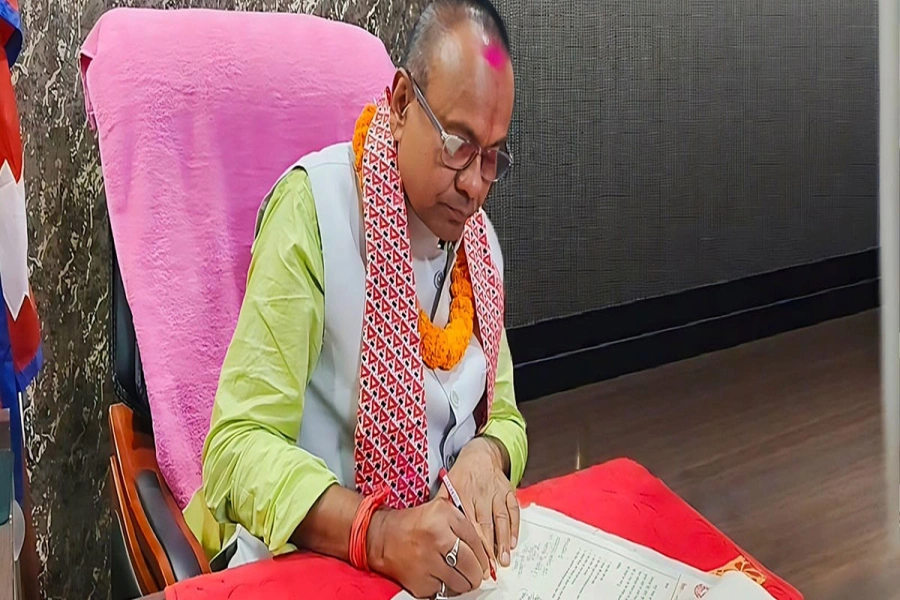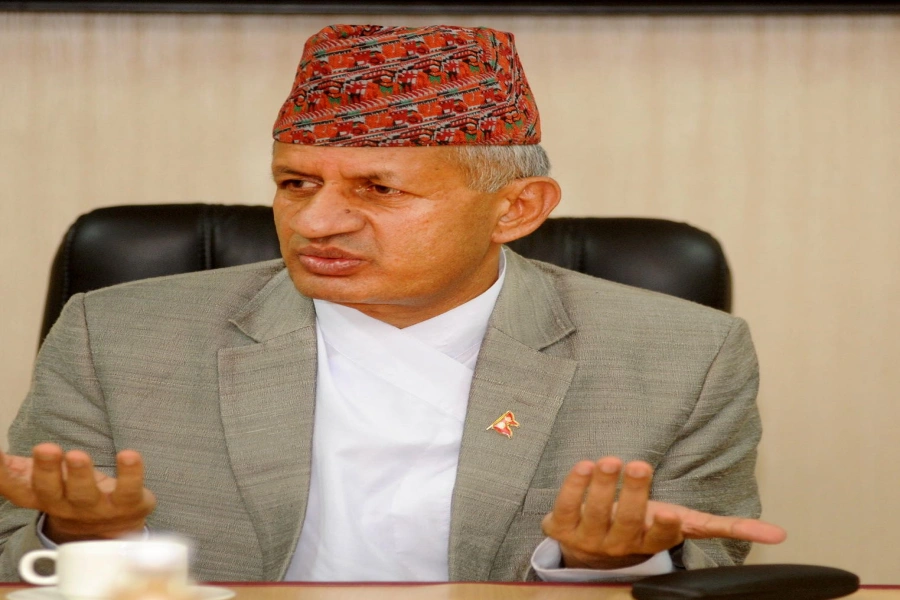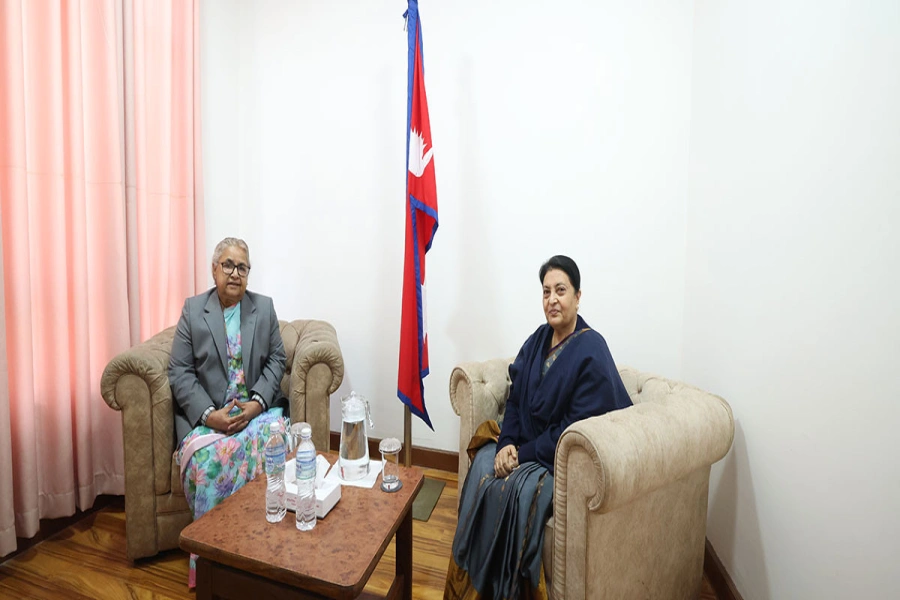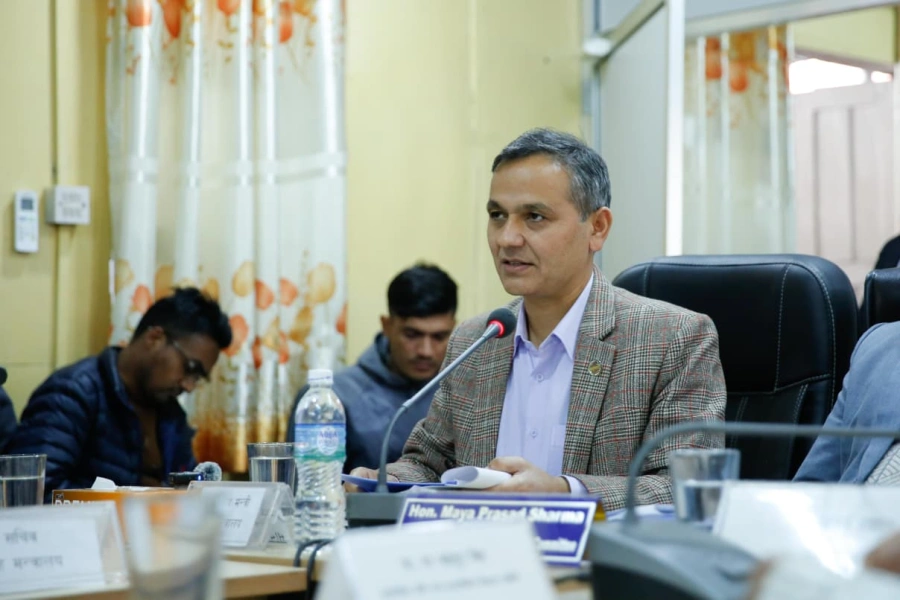KATHMANDU, June 10: It has been four decades since Hari Krishna Shrestha, 56, has been feeding and taking care of animals at the central zoo in Jawalakhel. This is the only zoo in the country and is home to dozens of species of mammals, fish, reptiles and birds. His long association with the precious creatures means he can read their faces. The ongoing lockdown amid the coronavirus threat has affected the species in the zoo; their behavior shows that they are missing humans, said Hari Krishna. He was busy feeding monkeys on Saturday evening. "I am feeding Langurs now. Even now they are stretching their necks to see if anyone comes around. They are quieter than usual and look unhappy. We have other species of monkeys too but Langurs would get maximum attention," he reported over the phone. The administration has strictly prohibited visitors in the zoo since the government enforced lockdown in March of this year.
Owing to lockdown, a lot of zoo staff have gone home too, making humans' presence there even thinner. Remaining staff stay at the zoo and they are overburdened. "We were over 60 people, now only 19 remain. So we have to work very hard, from dawn to dusk, we hope things will get normal soon," sad Hari Krishna, a local of Jawalakhel.
Except for monkeys, it is the elephant, bear and cat species, among others who look lonelier and quieter. They make fewer movements around and seem to enjoy less than they used to do. "Hundreds of people would come in throughout the day. Children would exclaim joyfully, all that would bring happiness to animals too," said another zoo staff Rajkumar Basnet. "But now, a kind of silence has prevailed. No crowd, no noise."
Central zoo animals getting new homes

This new found peace is however being loved by some other species. They seem to feel free that there are no onlookers. According to Rajkumar, nocturnal species and some species of birds and amphibians and even tigers in the zoo look relaxed.
"We have four tigers currently -- Bange, Maharaj, Prakriti, Pratap -- and they come and stay out in the open for long hours. Otherwise, they would hide most of the time. Similarly, there are birds, certain types of them, which feel good without crowds," said Rajkumar.
Also according to Radha Krishna Gharti, senior veterinary technician at the zoo, nocturnal species and shy creatures like red pandas clearly look happier that humans are not there to annoy them. When there would be more visitors, those animals would even compromise with food. Some would hesitate to go for mating. "So, no humans around means a private time for certain animals, which they desperately need. Some species even eat less when they feel disturbed due to visitors," he informed.
He further said that such things are taken care of. At times, animals are kept away from humans as per need. "A quick attention is given to the species as soon as they fall ill or need any help. Appetite loss among animals has not been noticed so far during the lockdown, their food habit is normal," he said, while adding that some animals might however have been missing food given by visitors. Monkeys and bears would get a huge attention as well as enough food from children and elders.
"They seem to have gone nostalgic about humans, when we pass by, they feel a little respite," Radha Krishna sheds light on the plights of the animals.
Established as a private zoo in 1932 by the late Rana Prime Minister Judda Samsher, it was opened to the public in 1956. Spread over six hectares of land, it is now home to about 870 animals of 109 species, that includes several endangered local species. The administration records around 3,000 visitors daily while on Saturdays it goes upto 10,000. The zoo is operated by the National Trust of Nature Conservation.






































